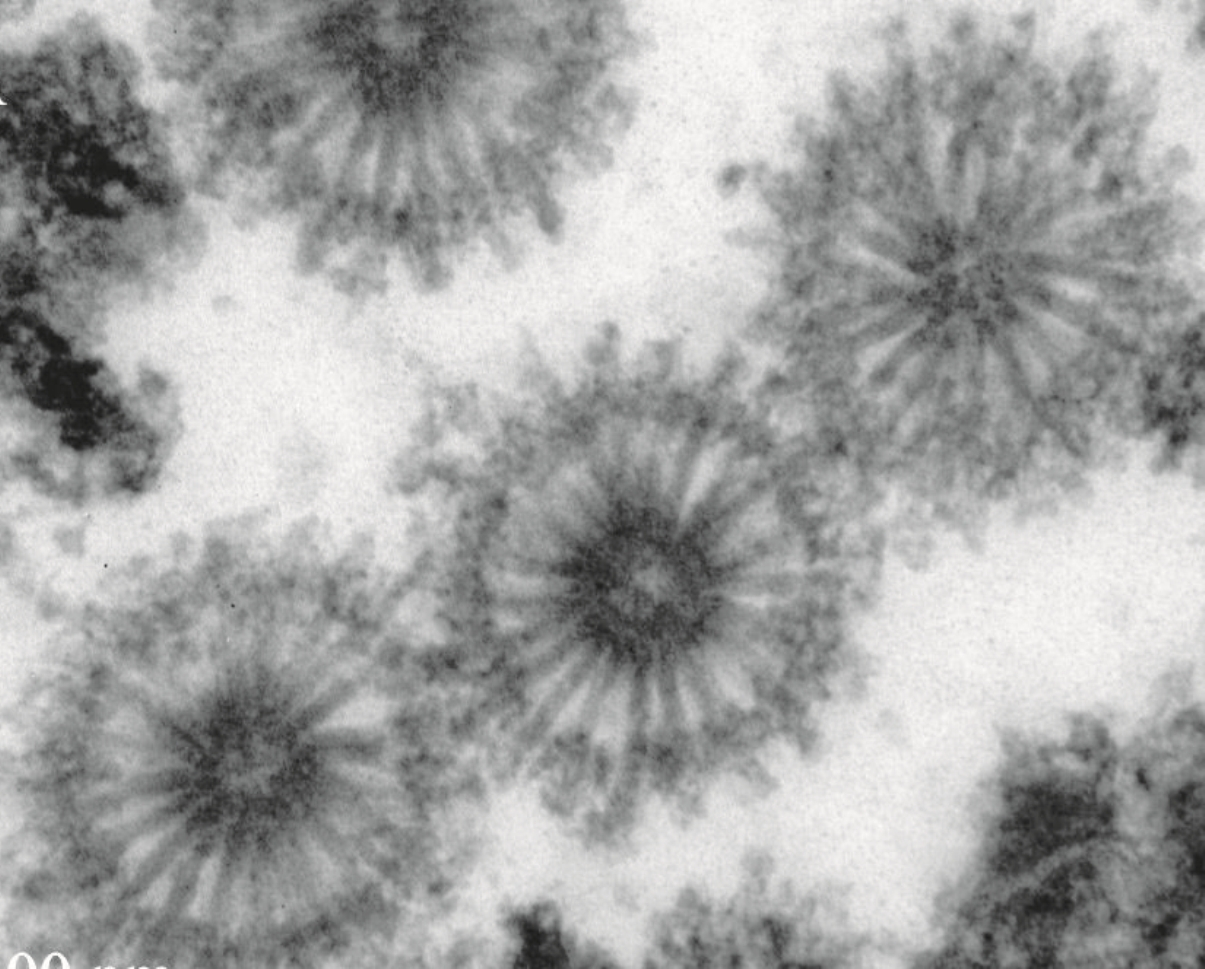Scientists from St Petersburg University discovered the virus-like particles in Bryozoa

Scientists from Russia, Austria, and the USA have discovered virus-like particles in the bacterial symbionts of Bryozoa — a phylum of colonial aquatic invertebrates — filter-feeders dominating in many bottom ecosystems. The research project was planned and supervised by scientists from St Petersburg University.
Some of the virus-like particles resemble red blood cells, while others have a sea-urchin-like appearance. Although viruses have never been reported inside symbiotic bacteria in bryozoans, scientists suggest that this “matryoshka doll” may have a prominent effect on the bacterial hosts. The research is supported by a grant from the Russian Science Foundation. The results are published in the Scientific Reports (Nature Research Journals).
Life of most organisms on our planet is closely associated with bacterial communities — microbiota that plays a very important role in the health of the host from helping to control digestion to protection of the host from infections. Bryozoa are not an exception. Inside some of these invertebrates the symbiotic bacteria live that, e.g. make larvae not eatable for fish. Yet how the symbiosis can benefit the host itself still remains a mystery. Scientists from the St Petersburg University tried to solve it and eventually made an unexpected discovery.
They encountered the virus-like particles in the colonies of the cheilostome bryozoan Bugula neritina that were intertidally collected from the east coastal area of the USA, and in Paralicornia sinuosa that was collected near Australia. Between bacteria of B. neritina the virus-like particles were found that resembled red blood cells. The particles found inside and between bacteria of P. sinuosa were reminiscent the sea urchins. These were spherical and consisting of cylindrical/tube-like elements evenly radiating from the central double-walled ‘core’. To gain a better understanding of what the particles are and what role they play in the life of moss animals the biologists from the University established a collaboration with experts from the Winogradsky Institute of Microbiology, the Russian Academy of Sciences.
‘So-called “urchins” from the Australian bryozoan is much alike the “metamorphosis associated contractile structures (MACs)” described by the American scientists in 2014. These structures can be found inside the biofilm-forming marine bacteria Pseudoalteromonas luteoviolacea. MACs have the same origin as the viruses-bacteriophages. In fact, МАСs are an assemblage of multiple contractile systems related to the contractile tails of myoviruses (tailed bacteriophages with contractile tails). Contacting the biofilms of Pseudoalteromonas can induce larval metamorphosis in the tubeworm Hydroides elegans. When settling, the larvae of H. elegans contact the biofilm at sea bottom, and the "urchins"’ inside the biofilm inject a protein signal into the cells of the larvae. The delivery of the protein induces larval metamorphosis,’ said Professor Andrey Letarov, Head of the Laboratory of Microbial Viruses at the Winogradsky Institute of Microbiology, RAS.
Yet there are some differences, Dr Letarov explained. The ‘urchins’ inside the bacteria that were studied by the Americans are very large and not ‘well-organized’, while the particles inside the bacteria of Paralicornia sinuosa are finely structured into tiny spheres. But generally speaking, there is much in common between these structures. What role the ‘urchins’ play in this biological system remains unclear. Yet there is some tentative evidence.
‘We know that in some bryozoan species, in particular in Bugula neritina, bacteria from maternal tissues are transmitted to larvae thus providing the vertical transfer of the symbionts between bryozoan generations. Viruses should be transmitted together with bacteria. Yet not all of the bacteria are moved into the larvae. Those that remain in the host can multiply producing an excess of toxic metabolites. This can pose a potential threat to the host. Presumably, the newly discovered viruses can destroy these bacteria thus regulating the symbiont number in the bryozoan hosts,’ said Andrew Ostrovsky, Professor at the Department of Invertebrate Zoology, St Petersburg University, and head of the research project.
’The Mac-like structures (“urchins”) found in the Australian bryozoan also destroy bacteria. Yet it remains unclear whether they have analogous functions as in the system P. luteoviolaceae — H. elegans. In other words, whether they can deliver a signal from bacterial symbionts to the host,’ added Dr Letarov.
Much has to be done, especially in respect to molecular processes in which the virus-like particles can be involved. The scientists are planning to sequence the genome of bacteria containing these virus-like particles to reveal genetic information that regulates their formation. The work will be done in collaboration with bioinformaticians. This may help in gaining a better understanding of what proteins are produced by the ‘urchins’ and how they can influence other parts of this biological “matryoshka”.
Yet collecting fresh bryozoan colonies to continue this research is rather difficult task. Cultivation of the bryozoan symbiotic bacteria in the laboratory was never successful. They can be collected only in their natural habitats, which are the coastal area of Australia and east coastal area of the USA. But even getting there, especially during the current pandemic, is very difficult. This makes scientists think about finding the similar symbiotic systems near the Marine Biological Station of the University at the White Sea. Among bryozoans found in the region, some species possess bacteria.
Paralicornia sinuosa. Colony collected at the Great Barrier Reef, Coral Sea, Australia.
Bugula neritina. Colony collected intertidally on Atlantic Beach, USA.
’Viruses are non-cellular infectious agents. Presumably, they are the most numerous ‘particles of life’ on the planet. They can replicate, i.e. make copies of themselves, by using bacteria, archaea, protists, fungi, plants, and animals. In other words, all living organisms,’ Andrew Ostrovsky said. ‘It is a gigantic world that dates back to the period when cellular life on Earth began. Not surprisingly then that viruses are deeply involved in regulation of many processes in living organisms. Without viruses, life and the planet would not exist.’
The research is supported by the grant No 18-14-00086 from the Russian Science Foundation. It is partly carried out by using the equipment provided by the Research Park of the University.

